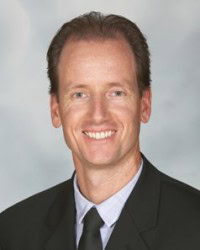Upon encountering confusion in the classroom regarding the issues of bias versus point of view, high school and college educator reflects on an exercise that may help and discusses how he will use the summer to revise his curriculum.
“I destroyed that DBQ, Mr. Harris, especially the point of view!” says the sophomore. “It was a document talking about how Muslims were not to be trusted in business but it was written by a Christian! He was totally biased!”
And with that, the topic of my summer planning for 2015 was set.
At the close of every school year, I decompress. Two weeks with no e-mail, no planning, no self-reflection, nothing. Just family, friends, and whatever selfish activities I’ve been putting off for too long. While hearing “you’re so lucky to get summers off!” is one of my great pet peeves it is still half-true: time off in the summer is a glorious thing.
Nevertheless, for historians involved more in teaching than research, summers are of critical professional importance. After my two week “sabbatical” is over, I ease back into the mindset of the teaching historian, and begin thinking of how best to improve my history class lessons for the next school year.
In the summer I prefer to focus on adjusting how I teach historical thinking skills, or “what students should be able to do” rather than “what students should know.” Step one is identifying what skill-based lessons worked well over the past year, and reflecting on their success. Step two is identifying what lessons faltered, asking why, and determining whether I should adjust or scrap them altogether.
Last summer, my primary concern was how to personalize the concept of continuity and change. While most of my students had a strong sense of this concept, many struggled to independently recognize, analyze, and evaluate these historical processes on their spring final exam. It was clear that my standard methods of modeling this critical skill were insufficient. After reminding myself who I was dealing with (adolescents) and the ways in which their brains are wired (towards peer-to-peer social connections), I decided to try a new approach.1
I asked students to work collaboratively in building more personal understandings of continuity and change. In a series of lessons, each student created a timeline of their life from age 5 to present and marked it with 10 to 20 of their life’s most significant moments. From first crushes to family relocation and parental divorce, nothing was off limits unless the student wanted it to be. Then I asked each student to reflect on what factors drove those changes and whether they could be categorized as social, cultural, economic, or perhaps environmental in nature. Finally, I asked each student to look back at their timeline and decide what were the two most significant continuities and changes on the list.
When it came time for students to share their timelines with a peer or in groups, the activity took on a life of its own. Students debated whether economic or political factors drove their family’s move, laughed at their common love of now embarrassing music, and bared triumphs and losses they would have never shared in a standard class discussion. In the end, their definitions of continuity and change were much more personal and their analysis of source material for the rest of the year vastly improved.
For this summer my primary focus will examine how I approach the concepts of bias and perspective. Despite many efforts to educate otherwise, it would seem that a good number of my students still equate these two (admittedly confusing) concepts. I will certainly tie whatever I develop to the exercise on continuity and change, and hope any of you might be willing to share what works, or doesn’t, in your own classrooms, wherever they may be.
This post first appeared on AHA Today.
Notes
- See National Geographic, https://ngm.nationalgeographic.com/2011/10/teenage-brains/dobbs-text. [↩]
James Harris is the history and social studies chair at St. Margaret’s Episcopal School in San Juan Capistrano, as well as a part-time professor of history at Saddleback College in Mission Viejo. He was also a member of AHA’s 2014 Program Committee. Feel free to email him at jharris@smes.org or contact him on Twitter @JaZarris to discuss ideas for classroom exercises.
This work is licensed under a Creative Commons Attribution-NonCommercial-NoDerivatives 4.0 International License. Attribution must provide author name, article title, Perspectives on History, date of publication, and a link to this page. This license applies only to the article, not to text or images used here by permission.



